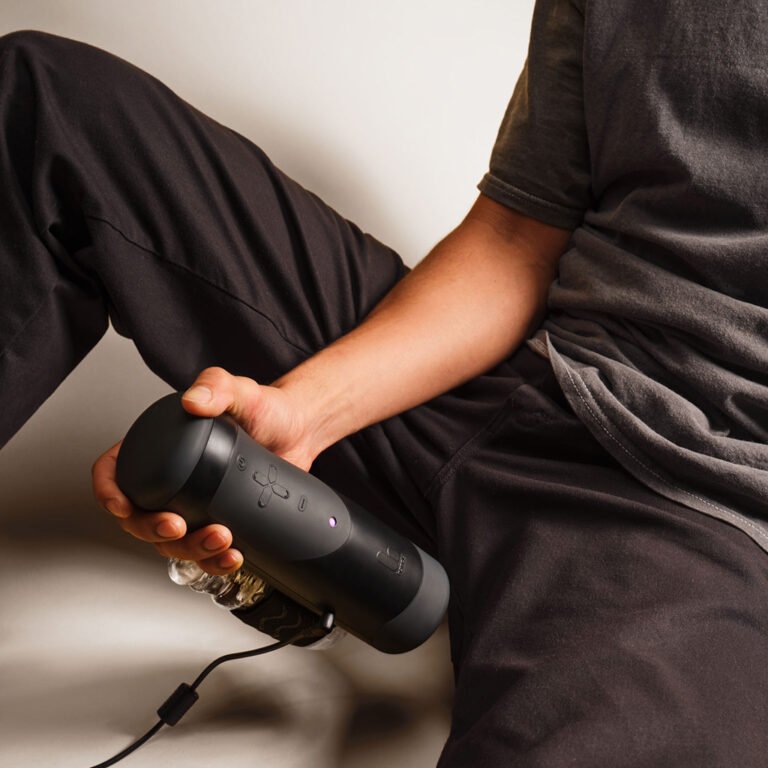Bondage for Beginners – The Beginner’s Guide to Bondage and BDM
Looking for a Bondage for Beginners guide? Well look no further. Bondage can feel mysterious, even intimidating, often surrounded by misconceptions. But at its core, it’s a consensual practice centered on restraint using ropes, cuffs, or other tools to enhance trust, intimacy, and pleasure. Though it has roots in various cultural traditions, including Japanese rope art (Shibari), bondage has gained broader acceptance only recently.
A fulfilling bondage experience depends on three non-negotiable pillars: safety, consent, and communication. Understanding these principles ensures that both partners feel respected, secure, and connected throughout the process. Whether you’re exploring light restraints or more intricate techniques, bondage can unlock new levels of intimacy when approached with care and intention.

Bondage for Beginners: Safety, Consent, and Communication
Safety First
Know the basics of your tools and techniques. For example, ensure that restraints don’t cut off circulation and always have safety shears nearby. Both partners must stay mindful of each other’s comfort and physical limits throughout a session.
Consent is Key
Both participants must agree to the experience without any form of pressure. Bondage play should only proceed when everyone involved feels comfortable and enthusiastic about the activity.
The Importance of Communication
Effective communication—before, during, and after—is essential. Partners should openly discuss preferences, boundaries, and expectations. Establishing safe words (e.g., “red” to stop, “yellow” to slow down) helps maintain control even in the heat of the moment.
Types of Bondage: Finding Your Style
Bondage offers a wide range of experiences, from light restraints to complex rope work, with each style bringing unique sensations and levels of intimacy. Here’s a breakdown of common bondage styles, complete with pros, cons, and levels to help you choose the best fit.
1. Light Restraints
- Examples: Handcuffs, soft cuffs, blindfolds
- Level: Bondage for Beginners

Pros:
- Easy to use and quick to set up
- Perfect for introducing light bondage without intense commitment
- Adds an element of control and anticipation
Cons:
- Limited sensation and control compared to more advanced techniques
- May feel basic once you’re comfortable with restraint
Light restraints are ideal for those curious about bondage but not ready to dive in fully. They’re a gentle introduction that lets you test comfort levels with minimal setup.
2. Sensory Play
- Examples: Blindfolds, feather ticklers, temperature play (like hot wax or ice)
- Level: Bondage for Beginners to Intermediate

Pros:
- Enhances other senses (touch, smell, sound) by removing sight
- Encourages creativity and connection between partners
- Great for building anticipation and trust
Cons:
- Requires some experimentation to find what works best
- Can be less intense if you’re looking for a strong restraint experience
Sensory play is perfect for exploring non-visual sensation and can be paired with light restraints for added thrill. It’s also easy to adjust intensity based on comfort.
3. Shibari & Kinbaku
- Examples: Rope bondage, intricate knotting techniques
- Level: Advanced

Pros:
- Offers visually stunning, artistic patterns on the body
- Can feel deeply intimate, requiring trust and cooperation
- Combines restraint with aesthetic appeal and physical connection
Cons:
- Requires skill and practice for safety and proper technique
- May need additional preparation time and equipment
- Some people may find the pressure of ropes uncomfortable
Shibari and Kinbaku provide an artistic and intimate approach to bondage. While it demands more time and practice, the combination of aesthetics, emotion, and trust creates an experience like no other.
Finding Your Perfect Fit
For Bondage beginners, starting with Light Restraints or Sensory Play can introduce you to the excitement of bondage with low intensity and risk. For those looking to advance, Shibari and Kinbaku offer both physical and emotional depth. Whatever style you choose, taking time to understand the pros, cons, and levels can help ensure a fun and comfortable experience.

Essential Bondage Gear for Bondage Beginners
Starting with the right products can enhance your experience while keeping things safe and enjoyable. Here are some popular Bondage beginner-friendly tools:
1. Handcuffs: Restriction and Control
Handcuffs are a classic way to experience restraint. They come in various materials:
- Metal cuffs offer a firm, intense grip.
- Leather cuffs are softer and more comfortable for longer sessions.
- Velcro cuffs are adjustable and beginner-friendly, allowing easy removal.
Safety tip: Check the tightness regularly to ensure circulation isn’t restricted.
2. Whips and Floggers: Play with Sensations
Whips and floggers offer a range of sensations—from teasing caresses to sharper impacts.
- Suede floggers provide a softer, more dispersed sensation—great for beginners.
- Leather whips offer sharper, stinging sensations, ideal for those seeking more intensity.
Pro Tip: Start with gentle strokes and gradually increase intensity while checking in with your partner. Focus on safe areas like the back, thighs, and buttocks.

3. Blindfolds: Amplify Anticipation
Blindfolds create a heightened sensory experience by eliminating sight.
- Satin or silk blindfolds feel soft and luxurious, perfect for first-timers.
- Leather blindfolds offer a snug fit for deeper immersion in sensory deprivation.
Using a blindfold adds surprise and excitement, as partners become more attuned to touch, sound, and scent. It’s a perfect starting point for Bondage for Beginners.
4. Ropes: Discover the Art of Shibari
Rope bondage offers endless creative possibilities, from simple ties to intricate patterns.
- Cotton ropes are soft and Bondage beginner-friendly.
- Jute or hemp ropes provide better grip, preferred for traditional Shibari.
Start with basic ties, such as the single-column tie, which secures one limb comfortably. Always ensure that you can slip two fingers under the rope to maintain circulation.
7 Ways to Get Started for Bondage for Beginners
1. Bedroom Basics: Start with the Bedframe
- Handcuffs or Restraints on the Bedposts: Using the bedframe for restraint is a classic option. Attach handcuffs or soft Velcro cuffs to the bedposts or headboard for secure, comfortable positioning.
- Blindfold Play: Adding a blindfold can heighten anticipation and sensory awareness, making every touch feel more intense.
- Pro Tip: Use a “starfish” position by restraining both wrists and ankles. This limits movement but keeps things comfortable for most Bondage for Beginners!
2. Doorframe Bondage: Something a Little Different
- Handcuffs or Restraints Over the Door: Many beginner bondage kits come with door straps that allow you to restrain your partner’s wrists above their head by looping restraints over a closed door. It’s a fun alternative to bed restraints and offers a whole new angle!
- Roleplay Scenario: Imagine one partner as a “thief” caught in the act. The other can play the “security guard” or “police officer” taking control.
- Pro Tip: This setup works best with soft restraints or adjustable cuffs that won’t hurt the wrists when weight is applied.

3. Living Room Roleplay: A Change of Scenery
- Sofa Restraint: Cuffs on the sofa or recliner can create an exciting change of scenery. Blindfolds are especially effective here to add surprise when switching locations!
- Creative Ideas: Try roleplay as strangers or even professional characters, like a “spa technician” and a “client.” This adds a playful edge and allows both of you to step into new roles.
- Pro Tip: Keep this setting cozy and comfortable with soft blankets or pillows for added support.
4. Games and Challenges: Fun Ways to Explore
- The “Hold Still” Game: Challenge your partner to stay as still as possible, even while restrained and blindfolded. Any movement results in a “penalty” (like a playful tease or caress).
- Temperature Play: Introduce temperature-based sensations by incorporating warm massage oils or a cool object like an ice cube on the skin.
- Trust Exercises: If you’re into sensory play, have one partner blindfolded while the other teases with different textures, like feathers or silk. This builds trust and anticipation.
5. Rope Bondage: Simple Yet Elegant
- Simple Wrist and Ankle Ties: Try basic rope ties like a single-column or double-column tie. These are perfect for keeping things simple and safe while giving a unique aesthetic.
- Pro Tip: Experiment with positions that allow more or less movement. Try tying wrists behind the back or in front, and explore your partner’s comfort zones.
- Artistic Play: You can also add a decorative element by using colored ropes or creating simple patterns. Even Bondage for Beginners can make bondage visually appealing!

6. Take It to the Next Level: Chair Bondage
- Secure the Wrists and Ankles to Chair Legs: This is great for adding a feeling of “captivity” and works well with roleplay. A sturdy chair is key, and soft restraints will prevent any discomfort.
- Roleplay Idea: Imagine a “villain” and “hostage” scenario where the restrained partner is “captured” and must find a way to “escape.”
- Pro Tip: Make sure the chair is stable and test it out for comfort. Use pillows for additional support if needed!
7. Explore Outdoor Bondage (With Privacy)
- Backyard or Balcony: If you have a private outdoor space, consider bringing light bondage elements like cuffs and blindfolds outside for a new experience. The fresh air and natural sounds can add a thrilling element to play.
- Pro Tip: Always check for privacy and safety first, and keep it simple with light restraints rather than intricate ties.
Key Frameworks: SSC and RACK
Following established safety principles makes bondage play more responsible and enjoyable.
- SSC (Safe, Sane, Consensual):
Every activity should be conducted safely, with clear-headed participants who give full consent. - RACK (Risk-Aware Consensual Kink):
Acknowledges that all kink activities carry some risk, but emphasizes informed consent where participants understand and agree to these risks.
Final Tips for Bondage for Beginners
- Set Boundaries: Have a conversation with your partner about limits before starting.
- Use Safe Words: Agree on easy-to-remember words to pause or stop activities.
- Practice Aftercare: Bondage can be an intense experience—make time for post-play discussions and care to process emotions and reconnect.
- Check in Often: Communication isn’t just for the beginning—keep checking in throughout the session to ensure everyone feels comfortable.

Exploring bondage can be an incredibly rewarding experience when approached with care, mutual respect, and curiosity. With the right tools, open communication, and a focus on safety, Bondage for Beginners can enjoy thrilling adventures while building deeper trust and intimacy with their partners.
Ready to explore? Start with small steps and work your way up—bondage is all about the journey, not the destination.
Want to read more about Couple Sex Toys? Check out this blog post Best Sex Toys for Couples







